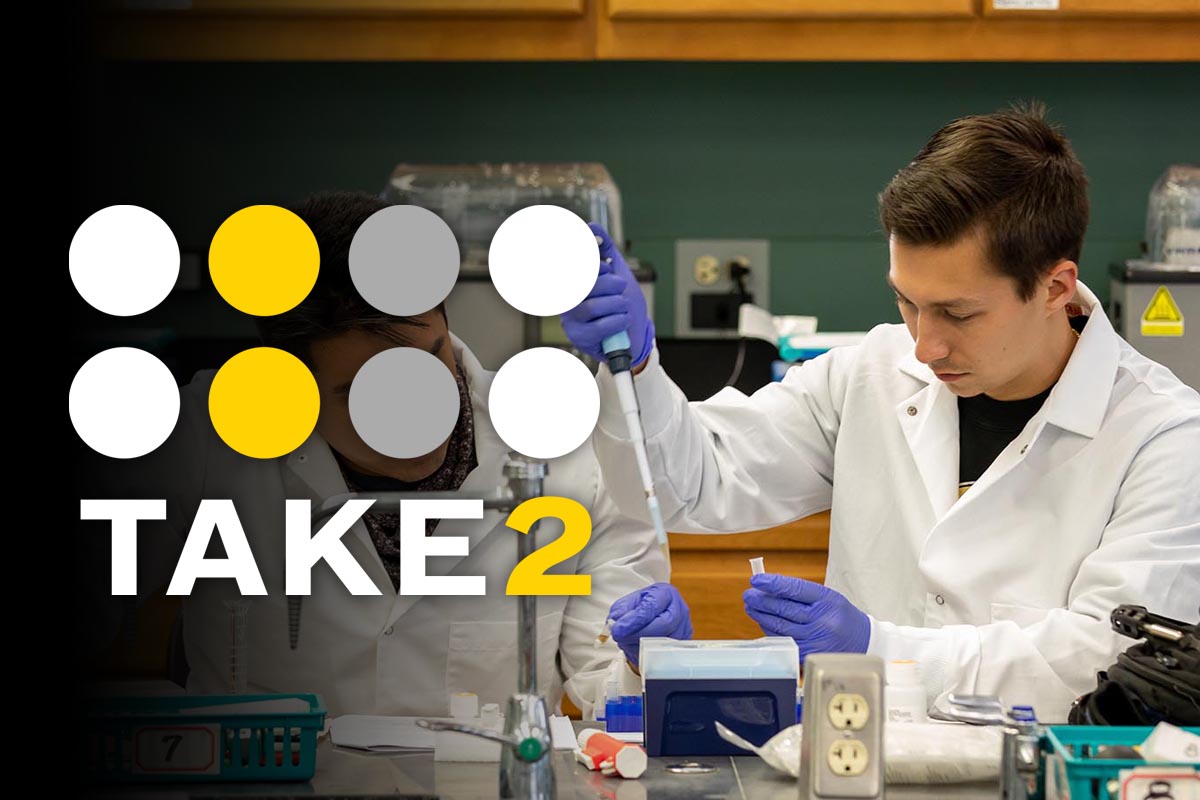Mouse squeaks, and the technology that detects them, subject of Summer Research Project
This story is part of an ongoing series featuring the work of faculty and students participating in Randolph’s Summer Research Program, which is being held virtually this year due to COVID-19.

The ultrasonic vocalizations of mice can’t be heard by human ears, but the way the animals use them can have wide-ranging implications for us.
The vocalizations are often used as a proxy for social behavior and communication because mice use them in social situations, says physics professor Katrin Schenk.
“Pups vocalize to the mother,” she said. “A male mouse vocalizes to another male mouse, not because they want to fight but because they’re social creatures. You rarely house mice by themselves. They’re very social, and they do a lot of their communicating in reference to other mice. So it makes a good assay for social behavior.
“There are a lot of diseases that affect communication and social behavior, and mouse models of those diseases are often used to test treatments.”
This summer, Schenk and a group of students—Dagim Desta ‘22, Jacob Katz ‘23, Jackson Powell ‘21, and Nicholas Vazquez ’23—are analyzing the effectiveness of several machine learning-based codes used for the detection and analysis of the vocalizations, referred to as calls.
“This project was super interesting to me because being able to find an optimum way to analyze them will help researchers in the future try and maybe find potential cures that are unknown,” Katz said. “There are lots of different things that can be catalyzed from our research, and I thought that was interesting, to be able to have that potential impact.”
Right now, the vocalizations can be detected using a code Schenk wrote, which segments out mouse calls from other noise in recordings. But they still have to be verified using the “by-eye” method, which requires analysts to look at the shape of a graph of the frequencies.
“We don’t listen to them because they’re ultrasonic, but we can look at them on a spectrogram,” Schenk said. “You would have to go through by-eye and make sure it’s all correct. That’s very time-consuming, and it takes expert knowledge to do.”
Over the past couple of years, some newer codes have been put out that will be the subject of their research this summer.
“We’re trying to see how well they do against the large amount of data we have that’s already been by-eye checked,” Schenk said. “The idea is just that if we can show that these codes do a really good job, as good as by-eye, then that will be really good for people. It will make it much easier than what’s happening.”
They’re analyzing 400 gigabytes of data from the University of Missouri, which includes calls from the California mouse, a wild mouse.
The students have divided up the work based on experience. Katz and Desta are handling the by-eye evaluations of previously segmented data that has already been compiled, while Powell and Vazquez are running the same data through the new codes to see what’s most effective. Then Desta will write a code to compare their findings and create an index.
They’re working together from up and down the East Coast, with Powell and Vazquez in Lynchburg, Desta in Maryland, and Katz in South Carolina.
“I feel like us being by ourselves has allowed us to become more independent and become more regimented, and make sure we’re doing things because we don’t have that person over our shoulder,” Powell said. “So I like that whole aspect that has come from the change in scenery.”
Tags: Katrin Schenk, mouse vocalizations, student faculty research, summer research, summer research 2020
